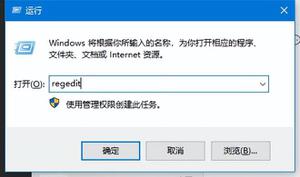JavaScanner

2. Scan a File
First – let"s see how to read a file using Scanner.
In the following example – we read a file contains “Hello world” into tokens:
1
2
3
4
5
6
7
8
9
10
@Test
public
void
whenReadFileWithScanner_thenCorrect()
throws
IOException{
Scanner scanner =
new
Scanner(
new
File(
"test.txt"
));
assertTrue(scanner.hasNext());
assertEquals(
"Hello"
, scanner.next());
assertEquals(
"world"
, scanner.next());
scanner.close();
}
Note that the next() method returns the next String token here.
Also, note how we"re closing the scanner when we"re done using it.
3. Convert InputStream to String
Next – let"s see how to convert an InputStream into a String using a Scanner:
1
2
3
4
5
6
7
8
9
10
11
12
13
14
15
@Test
public
void
whenConvertInputStreamToString_thenConverted()
throws
IOException {
String expectedValue =
"Hello world"
;
FileInputStream inputStream
=
new
FileInputStream(
"test.txt"
);
Scanner scanner =
new
Scanner(inputStream);
scanner.useDelimiter(
"A"
);
String result = scanner.next();
assertEquals(expectedValue, result);
scanner.close();
}
Similar to the previous example, we used the Scanner to tokenize the entire stream from the beginning to the next regex “A” – which matches the full input.
4. Scanner vs. BufferedReader
Now – let"s discuss the difference between Scanner and BufferedReader – we generally use:
- BufferedReader when we want to read the input into lines
- Scanner to read the input into tokens
In the following example – we"re reading a file into lines using BufferedReader:
1
2
3
4
5
6
7
8
9
10
11
12
13
14
15
16
@Test
public
void
whenReadUsingBufferedReader_thenCorrect()
throws
IOException {
String firstLine =
"Hello world"
;
String secondLine =
"Hi, John"
;
BufferedReader reader
=
new
BufferedReader(
new
FileReader(
"test.txt"
));
String result = reader.readLine();
assertEquals(firstLine, result);
result = reader.readLine();
assertEquals(secondLine, result);
reader.close();
}
Now, let"s use Scanner to read the same file into tokens:
1
2
3
4
5
6
7
8
9
10
11
12
13
14
15
16
17
@Test
public
void
whenReadUsingScanner_thenCorrect()
throws
IOException {
String firstLine =
"Hello world"
;
FileInputStream inputStream
=
new
FileInputStream(
"test.txt"
);
Scanner scanner =
new
Scanner(inputStream);
String result = scanner.nextLine();
assertEquals(firstLine, result);
scanner.useDelimiter(
", "
);
assertEquals(
"Hi"
, scanner.next());
assertEquals(
"John"
, scanner.next());
scanner.close();
}
Note how we"re using the ScannernextLine() API – to read the entire line.
5. Scan Input From Console Using New Scanner(System.in)
Next – let"s see how to read input from the Console using a Scanner instance:
1
2
3
4
5
6
7
8
9
10
11
12
13
14
@Test
public
void
whenReadingInputFromConsole_thenCorrect() {
String input =
"Hello"
;
InputStream stdin = System.in;
System.setIn(
new
ByteArrayInputStream(input.getBytes()));
Scanner scanner =
new
Scanner(System.in);
String result = scanner.next();
assertEquals(input, result);
System.setIn(stdin);
scanner.close();
}
Note that we used System.setIn(…) to simulate some input coming from the Console.
5.1. nextLine() API
This method simply returns the string at the current line:
1
scanner.nextLine();
This reads the content of the current line and returns it except for any line separator at the end – in this case – the new line character.
After reading the content, Scanner sets its position to the start of the next line. The important point to remember is that the nextLine() API consumes the line separator and moves the position of the Scanner to the next line.
So the next time if we read through Scanner we"ll be reading from the start of the next line.
5.2. nextInt() API
This method scans the next token of the input as an int:
1
scanner.nextInt();
The API reads the integer token available next.
In this case, if the next token is an integer and after the integer, there is a line separator, always remember that nextInt() will not consume the line separator. Instead, the position of the scanner will be the line separator itself.
So if we have a series of operations, where the first operation is a scanner.nextInt() and then scanner.nextLine() and as an input if we provide an integer and press line break, both the operations will be executed.
The nextInt() API will consume the integer and the nextLine() API will consume the line separator and will place Scanner to the starting of the next line.
6. Validate Input
Now – let"s see how to validate input using a Scanner. In the following example – we use the Scanner method hasNextInt() to check if the input is an integer value:
1
2
3
4
5
6
7
8
9
10
11
12
13
14
15
@Test
public
void
whenValidateInputUsingScanner_thenValidated()
throws
IOException {
String input =
"2000"
;
InputStream stdin = System.in;
System.setIn(
new
ByteArrayInputStream(input.getBytes()));
Scanner scanner =
new
Scanner(System.in);
boolean
isIntInput = scanner.hasNextInt();
assertTrue(isIntInput);
System.setIn(stdin);
scanner.close();
}
7. Scan a String
Next – let"s see how to scan a String using Scanner:
1
2
3
4
5
6
7
8
9
10
11
12
13
@Test
public
void
whenScanString_thenCorrect()
throws
IOException {
String input =
"Hello 1 F 3.5"
;
Scanner scanner =
new
Scanner(input);
assertEquals(
"Hello"
, scanner.next());
assertEquals(
1
, scanner.nextInt());
assertEquals(
15
, scanner.nextInt(
16
));
assertEquals(
3.5
, scanner.nextDouble(),
0.00000001
);
scanner.close();
}
Note: The method nextInt(16) reads the next token as a hexadecimal integer value.
8. Find Pattern
Now – let"s see how to find a Pattern using Scanner.
In the following example – we use findInLine() to search for a token that matches the given Pattern in the entire input:
1
2
3
4
5
6
7
8
9
10
11
@Test
public
void
whenFindPatternUsingScanner_thenFound()
throws
IOException {
String expectedValue =
"world"
;
FileInputStream inputStream =
new
FileInputStream(
"test.txt"
);
Scanner scanner =
new
Scanner(inputStream);
String result = scanner.findInLine(
"wo..d"
);
assertEquals(expectedValue, result);
scanner.close();
}
We can also search for a Pattern in the specific domain using findWithinHorizon() as in the following example:
1
2
3
4
5
6
7
8
9
10
11
12
13
14
15
@Test
public
void
whenFindPatternInHorizon_thenFound()
throws
IOException {
String expectedValue =
"world"
;
FileInputStream inputStream =
new
FileInputStream(
"test.txt"
);
Scanner scanner =
new
Scanner(inputStream);
String result = scanner.findWithinHorizon(
"wo..d"
,
5
);
assertNull(result);
result = scanner.findWithinHorizon(
"wo..d"
,
100
);
assertEquals(expectedValue, result);
scanner.close();
}
Note that the search horizon is simply the number of characters within which the search is performed.
9. Skip Pattern
Next – let"s see how to skip a Pattern in Scanner. We can skip tokens that match a specific pattern while reading the input using Scanner.
In the following example – we skip “Hello” token using the Scanner method skip():
1
2
3
4
5
6
7
8
9
10
11
12
@Test
public
void
whenSkipPatternUsingScanner_thenSkipped()
throws
IOException {
FileInputStream inputStream =
new
FileInputStream(
"test.txt"
);
Scanner scanner =
new
Scanner(inputStream);
scanner.skip(
".e.lo"
);
assertEquals(
"world"
, scanner.next());
scanner.close();
}
10. Change Scanner Delimiter
Finally – let"s see how to change the Scanner delimiter. In the following example – we change the default Scanner delimiter to “o“:
1
2
3
4
5
6
7
8
9
10
11
12
13
14
15
16
@Test
public
void
whenChangeScannerDelimiter_thenChanged()
throws
IOException {
String expectedValue =
"Hello world"
;
String[] splited = expectedValue.split(
"o"
);
FileInputStream inputStream =
new
FileInputStream(
"test.txt"
);
Scanner scanner =
new
Scanner(inputStream);
scanner.useDelimiter(
"o"
);
assertEquals(splited[
0
], scanner.next());
assertEquals(splited[
1
], scanner.next());
assertEquals(splited[
2
], scanner.next());
scanner.close();
}
We can also use multiple delimiters. In the following example – we use both commas “,” and dash”–” as delimiters to scan a file contains “John,Adam-Tom“:
1
2
3
4
5
6
7
8
9
10
11
12
@Test
public
void
whenReadWithScannerTwoDelimiters_thenCorrect()
throws
IOException {
Scanner scanner =
new
Scanner(
new
File(
"test.txt"
));
scanner.useDelimiter(
",|-"
);
assertEquals(
"John"
, scanner.next());
assertEquals(
"Adam"
, scanner.next());
assertEquals(
"Tom"
, scanner.next());
scanner.close();
}
Note: The default Scanner delimiter is whitespace.
11. Conclusion
In this tutorial, we went over multiple real-world examples of using the Java Scanner.
We learned how to read input from file, Console or String using Scanner; we also learned how to find and skip a pattern using Scanner – as well as how to change the Scanner delimiter.
The implementation of these examples can be found over on GitHub.
以上是 JavaScanner 的全部内容, 来源链接: utcz.com/z/513049.html








